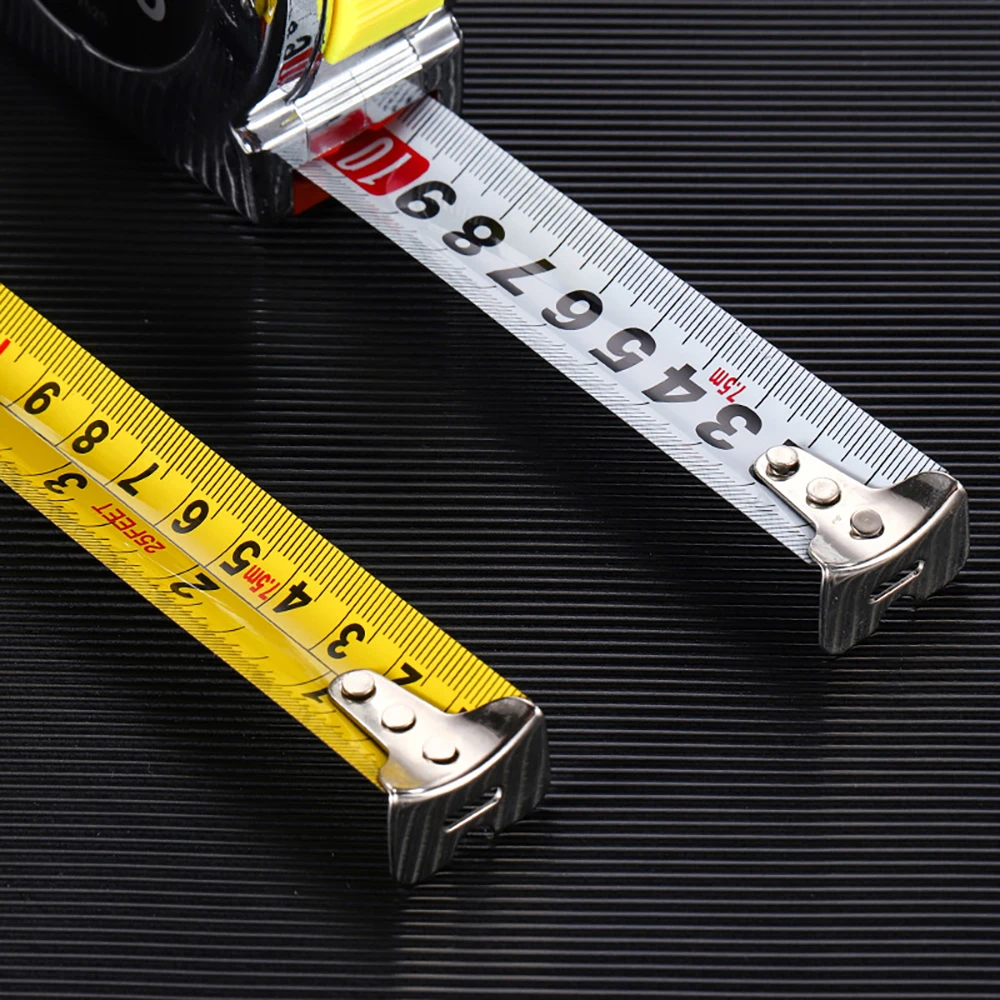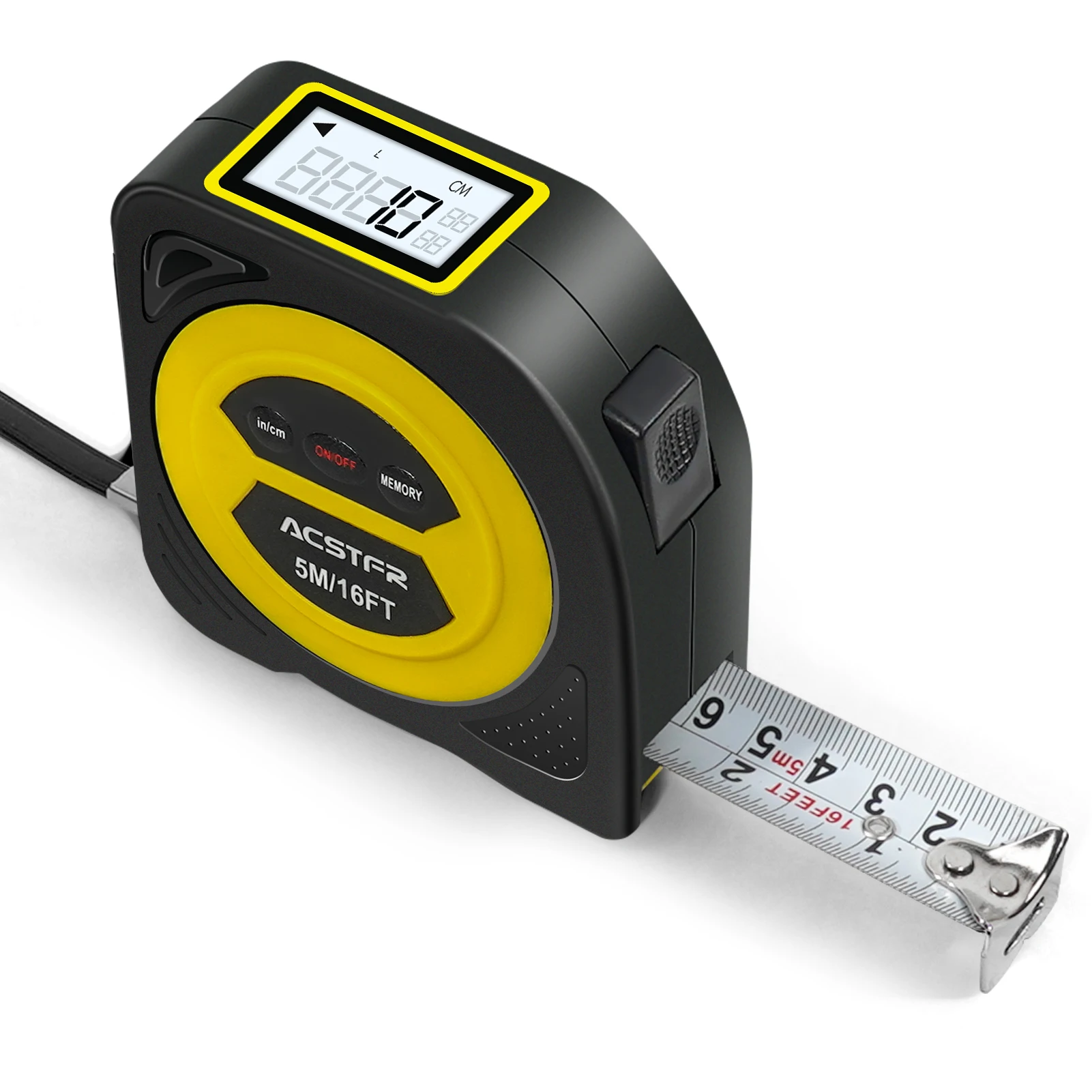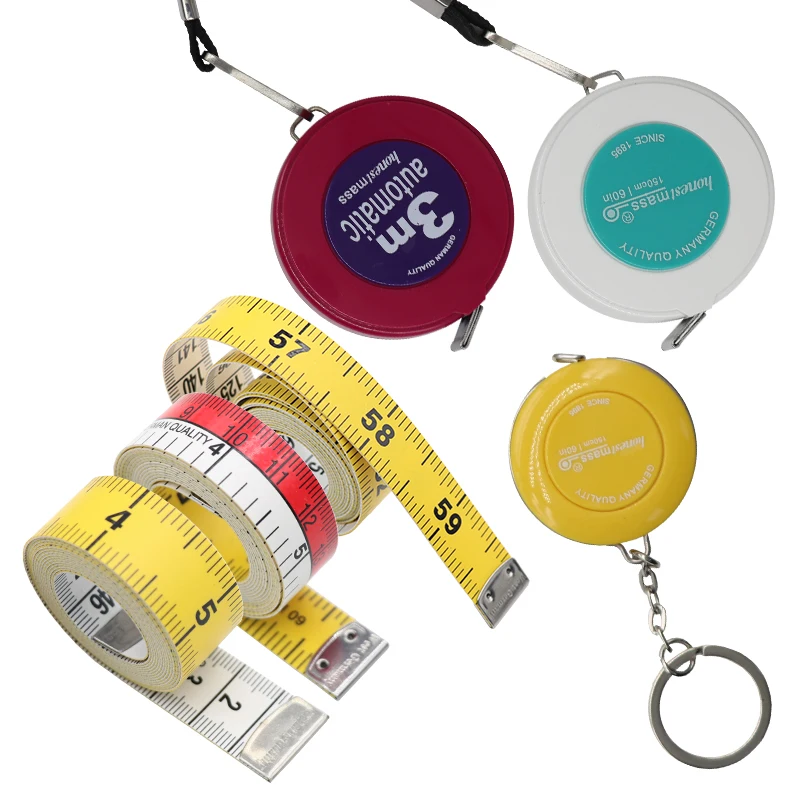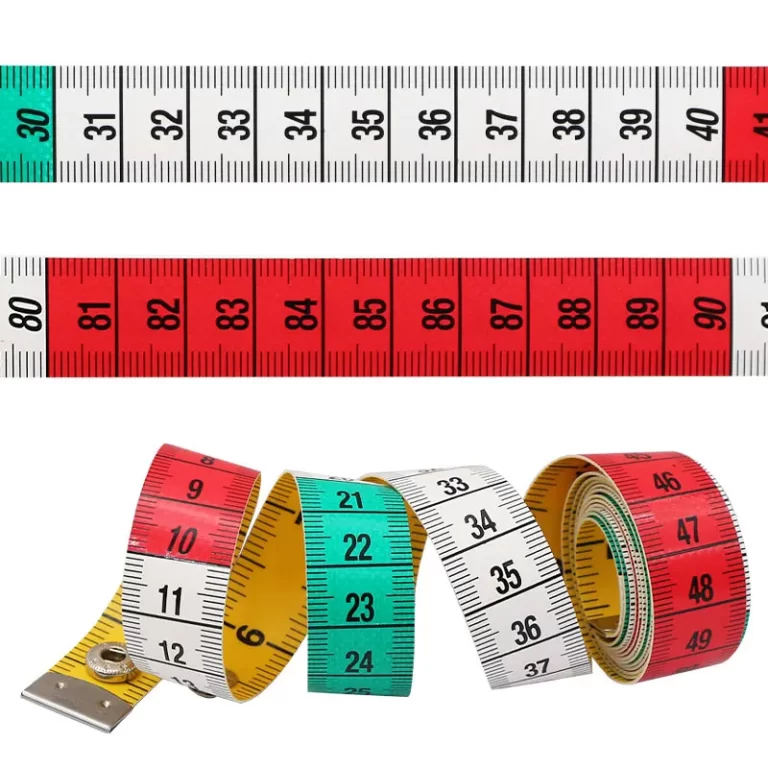
Measurements on Tape Measure: The Essential Guide for DIYers
When it comes to precision in construction, tailoring, or DIY projects, understanding measurements on tape measure is essential. Whether you’re a professional tradesperson or a home improvement enthusiast, knowing how to accurately read and utilize a tape measure can make all the difference in the quality of your work. This comprehensive guide delves into the intricacies of tape measures, exploring both imperial and metric scales, fractional increments, common mistakes, advanced techniques, and selecting the right tape measure for your specific needs. By the end of this article, you’ll be equipped with the knowledge to handle any measuring task with confidence and precision.
 Understanding the Basics of Tape Measure Scales
Understanding the Basics of Tape Measure Scales
A tape measure is a versatile tool designed to measure lengths and distances with ease. However, to use it effectively, it’s crucial to comprehend the different scales it offers. Most tape measures feature both imperial and metric units, each serving distinct purposes depending on the project requirements.
Imperial Scales: Inches and Fractions
The imperial system is widely used in the United States and other countries for various applications. Tape measures with imperial scales typically mark inches divided into fractions, such as halves, quarters, and sixteenths. This allows for precise measurements, especially in woodworking and construction where detailed dimensions are necessary.
For example, a standard tape measure may display:
- Whole inches (e.g., 1″, 2″, 3″)
- Half inches (½”)
- Quarter inches (¼”)
- Eighth inches (⅛”)
- Sixteenth inches (⅛”)
By understanding these fractional increments, you can achieve high levels of accuracy in your measurements, ensuring that your projects fit together seamlessly.
Metric Scales: Centimeters and Millimeters
Metric scales, measured in centimeters and millimeters, are commonly used in many parts of the world and are essential for international projects. Tape measures with metric markings provide a straightforward approach to measurement without the need for conversion from fractions.
A metric tape measure typically includes:
- Centimeters (cm)
- Millimeters (mm)
Centimeters and millimeters offer a clear and concise way to measure lengths, making them ideal for tasks that require precision, such as tailoring or engineering. Understanding metric measurements ensures that your work aligns with global standards, facilitating easier communication and collaboration across different regions.
 Mastering Fractional Increments for Precision
Mastering Fractional Increments for Precision
One of the key aspects of measurements on tape measure is the ability to interpret fractional increments accurately. Fractional units allow for precise measurements, which are crucial in detailed woodworking, metalworking, and other crafts where exactness is paramount.
Reading Fractional Inches
To effectively use fractional inches, start by familiarizing yourself with the common fractions:
- ½ inch: The halfway point between two whole inches.
- ¼ inch: A quarter of an inch, located at the first and third divisions between whole inches.
- ⅛ inch: Located between the quarter inch marks.
When measuring, note the position of the tape relative to the object being measured. For instance, if the object ends at the third division past the last whole inch, it corresponds to ⅜ inch. This level of detail ensures that your measurements are both accurate and reliable.
Practical Applications of Fractional Measurements
In woodworking, precise measurements are essential for cutting and fitting pieces together. For example, when building a cabinet, accurate measurements ensure that doors and drawers fit perfectly. Similarly, in metalworking, precise measurements are crucial for creating components that fit together without gaps or overlaps.
By mastering fractional increments, you enhance your ability to produce high-quality work, reduce material waste, and minimize the need for adjustments during assembly. This precision not only improves the overall aesthetic of your projects but also ensures their structural integrity and functionality.
Avoiding Common Measurement Mistakes
Even with a thorough understanding of tape measures, it’s easy to make mistakes that can compromise the accuracy of your measurements. Being aware of these common errors and knowing how to avoid them is essential for achieving reliable results.
Common Measurement Errors
- Not Holding the Tape Measure Straight: Allowing the tape to bend or curve can lead to inaccurate measurements. Always ensure the tape is taut and straight when taking a measurement.
- Misreading the Zero Point: Some tape measures have a small graduation at the start, which can be confusing. Ensure that you’re reading from the exact zero point to avoid discrepancies.
- Failing to Consider the Tape’s Thickness: The thickness of the tape measure itself can affect the measurement, especially in applications where precision is critical.
- Ignoring the Lock Mechanism: Not locking the tape measure can cause it to retract unexpectedly, leading to measurement errors.
Strategies to Prevent Measurement Mistakes
- Use a Straight Edge: When measuring longer distances, use a straight edge or another tool to keep the tape measure aligned properly.
- Double-Check Measurements: Always take measurements twice to confirm their accuracy. This simple step can catch errors before they affect your project.
- Mark Measurements Clearly: Use a pencil or another marking tool to indicate your measurements on the tape measure, ensuring you don’t lose your place.
- Practice Consistent Technique: Develop a consistent method for measuring, such as always starting from the same point and keeping the tape level.
By implementing these strategies, you can significantly reduce the likelihood of making measurement errors, ensuring that your projects are both accurate and successful.
 Advanced Measurement Techniques for Complex Projects
Advanced Measurement Techniques for Complex Projects
For projects involving complex shapes and angles, standard measuring techniques may not suffice. Developing advanced measurement skills can help you tackle intricate designs with ease and precision.
Measuring Curves and Angles
When dealing with curved surfaces or angled cuts, traditional linear measurements may not provide the necessary detail. Instead, consider the following techniques:
- Using a Flexible Tape Measure: A flexible tape measure can conform to curves, allowing you to take accurate measurements of circular or irregular shapes.
- Template Creation: Create a template or pattern by tracing the shape you need to measure. This can then be used to transfer accurate measurements to your project.
- Angle Finders and Protractors: Utilize angle finders or protractors to measure and replicate specific angles, ensuring that angled cuts are precise.
Measuring Irregular Shapes
For irregular shapes, breaking down the measurement process into simpler steps can enhance accuracy:
- Divide the Shape into Basic Geometric Forms: Break down complex shapes into rectangles, triangles, and circles. Measure each component separately and combine the measurements to achieve the total length.
- Use String or Wire: Wrap a string or wire around the irregular shape, then measure the string’s length with the tape measure.
- Digital Measuring Tools: Consider using digital measuring tools or specialized software for more complex measurements, which can provide higher accuracy and ease of use.
Practical Applications
In construction, accurately measuring angles and curves is essential for creating stable structures. Similarly, in crafting and design, precise measurements ensure that decorative elements fit perfectly and function as intended. By mastering these advanced techniques, you can confidently tackle any project, no matter how complex, with professional-level accuracy.
Choosing the Right Tape Measure for Your Needs
Selecting the appropriate tape measure is crucial for ensuring that your measurements are accurate and that your projects run smoothly. Different types of tape measures offer various features tailored to specific tasks and environments.
Types of Tape Measures
- Steel Tape Measures: Durable and robust, steel tape measures are ideal for construction and carpentry projects where toughness is required. They can withstand heavy use and rough conditions without easily bending or breaking.
- Fiberglass Tape Measures: Lightweight and flexible, fiberglass tape measures are perfect for measuring soft or delicate materials such as fabrics. They are less likely to kink and are easier to handle in tight spaces.
- Self-Locking Tape Measures: Featuring a mechanism that locks the tape in place, self-locking tape measures eliminate the need to hold the tape manually. This feature enhances safety and accuracy, especially when measuring longer distances.
- Digital Tape Measures: For those seeking the highest level of precision, digital tape measures offer electronic readings that reduce the risk of human error. They are particularly useful in tasks that require exact measurements, such as engineering and high-precision carpentry.
Factors to Consider When Choosing a Tape Measure
- Measurement Range: Ensure the tape measure covers the length required for your projects. Common ranges include 12, 16, 25, and 30 feet.
- Accuracy and Precision: For tasks that demand high accuracy, opt for tape measures with finer increments and minimal stretching.
- Durability: Consider the materials and construction of the tape measure, especially if you’ll be using it in harsh environments.
- Ease of Use: Features like a comfortable grip, easy-to-read markings, and smooth retraction can significantly enhance your measuring experience.
- Additional Features: Some tape measures come with built-in tools such as levels, stud finders, or magnetic hooks, which can add convenience and functionality to your work.
Making the Right Choice
Evaluate your specific needs and the nature of your projects to select the tape measure that best suits your requirements. For example, if you frequently work outdoors or on construction sites, a sturdy steel tape measure might be the best choice. On the other hand, if you handle delicate fabrics, a flexible fiberglass tape measure would be more appropriate.
 Enhancing Measurement Accuracy with Proper Techniques
Enhancing Measurement Accuracy with Proper Techniques
Even with the best tape measure, the accuracy of your measurements depends largely on your technique. Implementing proper measuring methods ensures that your measurements are reliable and consistent.
Steps for Accurate Measurement
- Secure the Starting Point: Ensure the tape measure is firmly anchored at the zero point. Using the built-in hook of the tape measure can help maintain consistency.
- Keep the Tape Straight: Avoid bending or twisting the tape as you measure. A straight tape prevents sagging, which can lead to errors.
- Align with the Object: Place the tape measure edge against the object being measured, ensuring no gaps or overlaps that could distort the measurement.
- Read at Eye Level: To prevent parallax errors, read the measurement at eye level, ensuring that your line of sight is perpendicular to the tape measure.
- Double-Check Measurements: Always take a second measurement to confirm accuracy. This step is especially important for critical dimensions.
Using Markers and Aids
Utilizing markers such as pencil marks or adhesive tape can help keep track of measurements, particularly when transferring measurements from one part of a project to another. Additionally, using measuring aids like plumb bobs or levels can enhance accuracy, especially in vertical measurements or when ensuring that measurements are perpendicular.
Practical Applications of Tape Measure Knowledge
The ability to accurately read and interpret measurements on a tape measure has numerous practical applications across various fields and projects.
In Construction and Carpentry
In construction, precise measurements are vital for cutting materials, aligning components, and ensuring the structural integrity of buildings. Whether framing walls, installing cabinetry, or laying flooring, accurate measurements ensure that each piece fits correctly, reducing waste and the need for costly adjustments.
In Tailoring and Fashion Design
For tailors and fashion designers, measurements are crucial for creating garments that fit perfectly. Understanding how to measure fabric and body dimensions accurately ensures that clothing items are comfortable and well-fitted, enhancing the overall quality and satisfaction of the end product.
In DIY Projects and Home Improvements
From building furniture to installing shelving, DIY enthusiasts rely on tape measures to execute projects successfully. Accurate measurements help avoid common pitfalls such as ill-fitting parts or unstable structures, allowing for professional-looking results even for novice makers.
In Engineering and Manufacturing
Engineers and manufacturers use tape measures to ensure that components meet exact specifications. Precise measurements are essential for maintaining quality control, ensuring that parts fit together correctly, and that products function as intended.
 Tips for Maintaining Your Tape Measure
Tips for Maintaining Your Tape Measure
Proper maintenance of your tape measure ensures its longevity and accuracy over time. Here are some tips to keep your tape measure in optimal condition:
Regular Cleaning
Keep the tape measure clean by wiping it down regularly to remove dust, debris, and moisture. This prevents rust and ensures that the markings remain clear and legible.
Avoid Dropping or Bending
Protect your tape measure from impacts and excessive bending, which can damage the tape and affect its accuracy. Handle it with care, especially when retracting the tape after use.
Store Properly
Store your tape measure in a dry, safe place away from extreme temperatures. Using a protective case or sheath can prevent damage and prolong the life of the tape measure.
Check for Damage
Regularly inspect your tape measure for signs of wear, such as frayed tape, missing markings, or a malfunctioning lock. Address any issues promptly to maintain the tool’s reliability.
Leveraging Technology for Enhanced Measurements
Modern advancements have introduced digital tape measures and smart measuring tools that offer increased precision and convenience. These technologies complement traditional tape measures, providing additional functionality and ease of use.
Digital Tape Measures
Digital tape measures provide electronic readings that can display measurements in both imperial and metric units. They often feature memory storage, allowing you to save multiple measurements, and some models offer Bluetooth connectivity for data transfer to other devices.
Smart Measuring Tools
Smart measuring tools integrate with smartphones and other digital devices, offering features such as augmented reality (AR) for visualizing measurements, automatic calculation of areas and volumes, and real-time data logging for project management.
Benefits of Advanced Tools
- Increased Accuracy: Digital readings reduce the risk of human error associated with traditional tape measures.
- Enhanced Convenience: Features like automatic locking and data storage save time and streamline the measuring process.
- Integration with Other Technologies: Smart tools can integrate with project management software, enhancing workflow and collaboration among team members.
Considerations When Using Advanced Tools
While digital and smart measuring tools offer significant advantages, it’s essential to understand their operation and limitations. Battery life, calibration requirements, and compatibility with other devices are factors to consider when incorporating these tools into your measuring toolkit.
Conclusion
Mastering measurements on tape measure is an invaluable skill that enhances accuracy and efficiency across a wide range of projects and professions. From understanding the nuances of imperial and metric scales to avoiding common measurement mistakes and employing advanced techniques for complex tasks, this guide provides the knowledge needed to utilize tape measures effectively. By selecting the right tape measure, maintaining it properly, and leveraging both traditional and modern measurement methods, you can achieve precise and reliable results every time. Whether you’re crafting, building, or embarking on a DIY endeavor, proficient use of a tape measure empowers you to bring your visions to life with confidence and precision.

